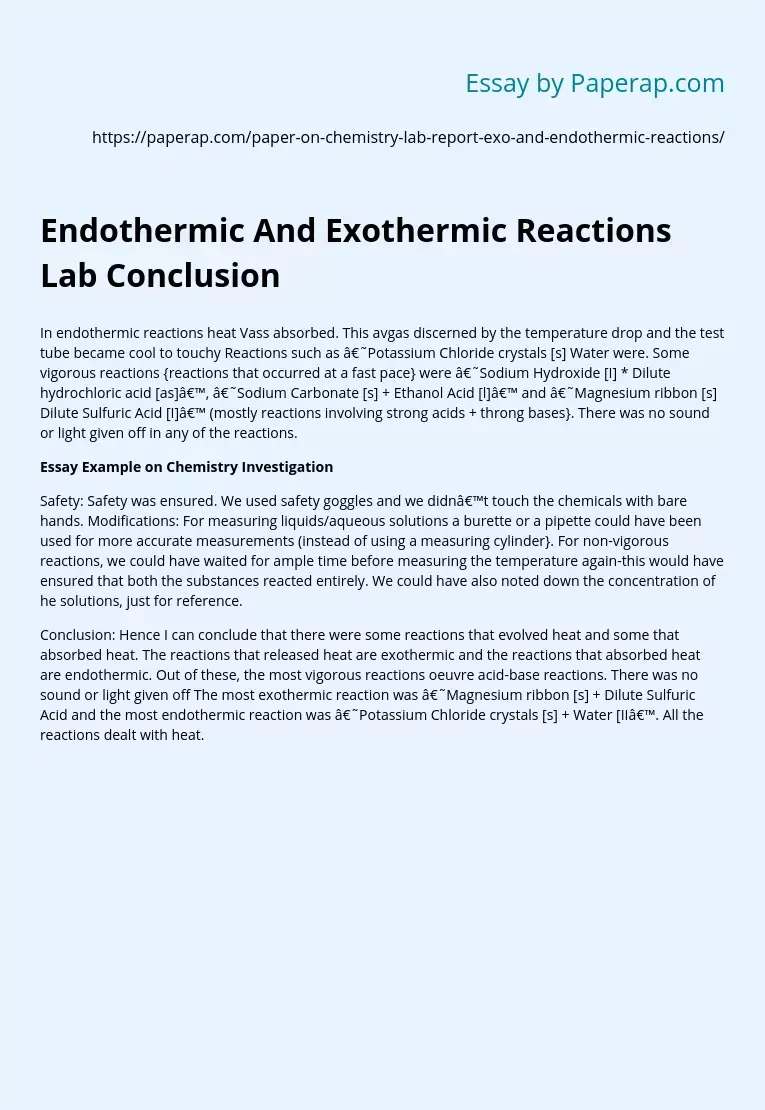Endothermic And Exothermic Reactions Lab Conclusion
In endothermic reactions heat Vass absorbed. This avgas discerned by the temperature drop and the test tube became cool to touchy Reactions such as ‘Potassium Chloride crystals [s] Water were. Some vigorous reactions {reactions that occurred at a fast pace} were ‘Sodium Hydroxide [I] * Dilute hydrochloric acid [as]’, ‘Sodium Carbonate [s] + Ethanol Acid [l]’ and ‘Magnesium ribbon [s] Dilute Sulfuric Acid [I]’ (mostly reactions involving strong acids + throng bases}. There was no sound or light given off in any of the reactions.
Essay Example on Chemistry Investigation
Safety: Safety was ensured. We used safety goggles and we didn’t touch the chemicals with bare hands. Modifications: For measuring liquids/aqueous solutions a burette or a pipette could have been used for more accurate measurements (instead of using a measuring cylinder}. For non-vigorous reactions, we could have waited for ample time before measuring the temperature again-this would have ensured that both the substances reacted entirely. We could have also noted down the concentration of he solutions, just for reference.
Conclusion: Hence I can conclude that there were some reactions that evolved heat and some that absorbed heat. The reactions that released heat are exothermic and the reactions that absorbed heat are endothermic. Out of these, the most vigorous reactions oeuvre acid-base reactions. There was no sound or light given off The most exothermic reaction was ‘Magnesium ribbon [s] + Dilute Sulfuric Acid and the most endothermic reaction was ‘Potassium Chloride crystals [s] + Water [II’. All the reactions dealt with heat.
Endothermic And Exothermic Reactions Lab Conclusion. (2019, Nov 27). Retrieved from https://paperap.com/paper-on-chemistry-lab-report-exo-and-endothermic-reactions/
